
The Ichneumonidae, also known as ichneumon wasps, ichneumonid wasps, ichneumonids, or Darwin wasps, are a family of parasitoid wasps of the insect order Hymenoptera. They are one of the most diverse groups within the Hymenoptera with roughly 25,000 species described as of 2016. However, this likely represents less than a quarter of their true richness as reliable estimates are lacking, along with much of the most basic knowledge about their ecology, distribution, and evolution. It is estimated that there are more species in this family than there are species of birds and mammals combined. Ichneumonid wasps, with very few exceptions, attack the immature stages of holometabolous insects and spiders, eventually killing their hosts. They thus fulfill an important role as regulators of insect populations, both in natural and semi-natural systems, making them promising agents for biological control.

Banchinae is a subfamily of ichneumonid parasitoid wasps containing about 1,500 species; the genera Glypta and Lissonota are very large. The three tribes are all distributed worldwide.
Lycorininae is a monotypic subfamily of ichneumon wasps. The mere thirty species or so comprise the single genus Lycorina. In older sources, they may be included in the Banchinae.

Xoridinae are a worldwide subfamily of the parasitic wasp family Ichneumonidae.

Ctenopelmatinae is a cosmopolitan subfamily of ichneumonid parasitoid wasps.

The Metopiinae are a worldwide subfamily of the parasitic wasp family Ichneumonidae. Metopiinae are koinobiont endoparasitoids of Lepidoptera. There are 26 extant genera. A bulging shield-like face is diagnostic for members of this subfamily, but many members lack this character.
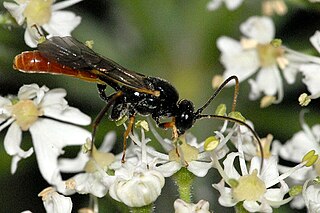
The Tryphoninae comprise a worldwide subfamily of the parasitic wasp family Ichneumonidae.

Ichneumoninae is a worldwide subfamily of the parasitic wasp family Ichneumonidae.

Eucerotinae is a worldwide subfamily of the parasitic wasp family Ichneumonidae with two genera, Euceros and Barronia.
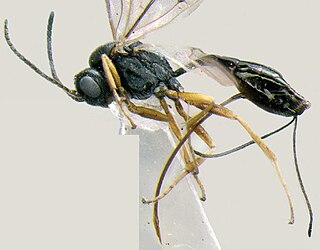
Tersilochinae is a worldwide subfamily of the parasitic wasp family Ichneumonidae.

The Labeninae is a subfamily within the parasitoid wasp family Ichneumonidae. The family is divided into 12 extant genera grouped within four tribes.

Amblyteles armatorius is a species of parasitic wasp in the family Ichneumonidae first described by Johann Reinhold Forster in 1771.

Idiogramma is a genus of wasp. It is the only extant genus in the tribe Idiogrammatini.

Aptesini is a tribe of ichneumon wasps in the family Ichneumonidae. There are 24 described genera.

Trogus is a genus of parasitoid wasp found in the Holarctic and Neotropic regions. It is placed in the subfamily Ichneumoninae and the tribe Ichneumonini. Trogus species are parasites of larvae and pupae of the swallowtail butterfly family, Papilionidae. The genus consists of twelve extant and one extinct species.
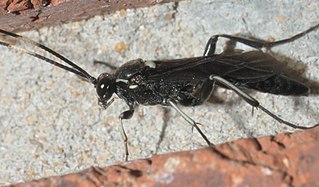
Ichneumonini is a tribe of ichneumon wasps in the family Ichneumonidae. There are more than 350 genera and thousands of described species in Ichneumonini.

Enicospilini is a tribe of Ichneumonidae wasp, parasitizing Lepidoptera larva.
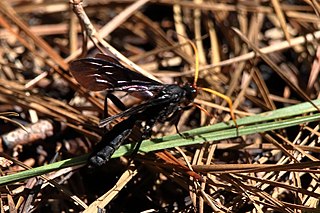
Gnamptopelta obsidianator is a species of wasp in the family Ichneumonidae and the only species in the monotypic genus Gnamptopelta.
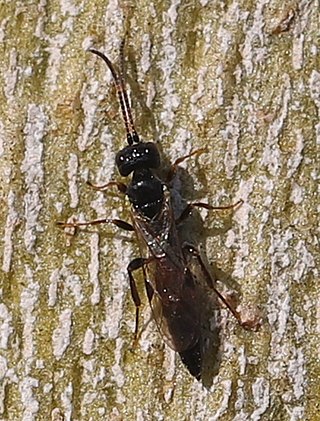
Phaeogenini is a tribe of ichneumon wasps in the family Ichneumonidae.

Platylabini is a tribe of ichneumon wasps in the family Ichneumonidae. There are at least 40 genera and about 8 described species in Platylabini.


















